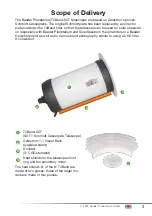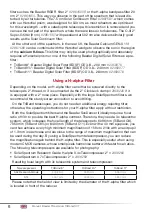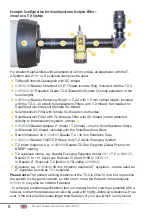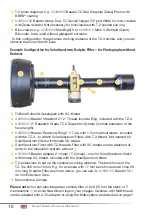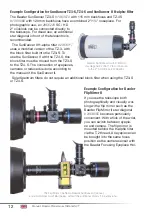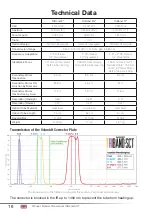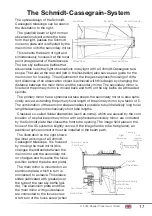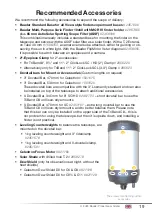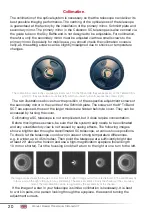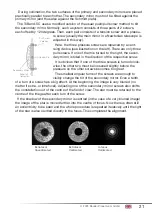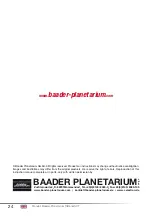
© 2023 Baader Planetarium GmbH
15
Observing Moon and Planets
The slightly different transmission widths of the individual transmission windows
result in slightly different exposure times for RGB images for the same brightness. The
Baader LRGB filter set needs approximately the following exposure times for same
brightness, normalised to the luminance channel:
Luminance: 1x
Red: 2x
Green: 5,3x
Blue: 5,3x
Depending on the camera sensitivity, these values may vary, but they give a good
start and should be taken into account for colour weighting.
When taking black-and-white photographs (especially of the moon), it is advisable to
use a red filter (e.g. LRGB red filter
# 2961603R
or 20-nm H-alpha
# 2961853
) or the OIII
Super-G 9 nm green filter
# 2961551
, as these reduce the influence of air turbulence
compared to photography without a filter.
With a colour camera, it must be taken into account that the blue channel in particular
is very close to the edge of the visible spectrum. The white balance must be adjusted
accordingly. For an automatic white balance, the moon is a good reference.
Accessories for Observing the Planets
Since the TriBand telescopes are based on classic Schmidt-Cassegrains, you can use
any conventional Barlow lens or telecentric system for focal length adjustment, and
also the Baader FFC for particularly high magnifications. You will find a selection at
Baader-planetarium .com
.
The heat shields are not necessary for night-time observing, instead you should use
a dew cap. The Celestron heat rings (
# 825912, # 825913, # 825914
) are not compatible
with the TriBand, as you will then not be able to insert the heat shields.
Observing Deep-Sky-Objects
Deep sky observation is possible with the TriBand as usual, but the image is darker
because you are already observing with a built-in filter, similar to a UHC filter. For ob-
serving objects with a continuous spectrum such as galaxies or star clusters, a normal
telescope is therefore better suited.
The TriBand coating is designed for use with narrowband nebula filters and allows
the important H-beta, O-III, H-alpha and S-II lines to pass. For RGB images, a little
more effort may be required in colour calibration or adjustment of the exposure time of
the individual RGB channels.
Using the SC thread or the T-adapter
# 2958500B
, you can connect filter wheels or
the Baader UFC filter slider to the telescope in the usual tilt-proof manner. For optimal
image quality, please note the specification of the back focus in the technical data.
The Baader Planetarium TriBand telescopes are based on the Celestron Schmidt-
Cassegrains and can be used like these with the common reducers.



